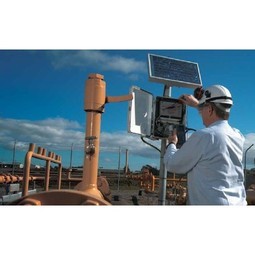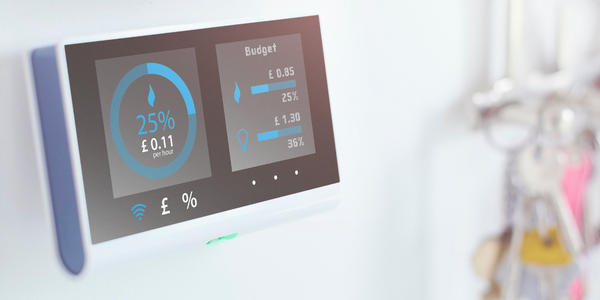Technology Category
- Networks & Connectivity - Routers & Bridges
- Sensors - Autonomous Driving Sensors
Applicable Industries
- Buildings
- Utilities
Use Cases
- Building Automation & Control
- Continuous Emission Monitoring Systems
About The Customer
GridPoint's customers are primarily commercial businesses looking to lower their energy costs and reduce their carbon footprint. These businesses come to GridPoint because they want to lower their Scope 2 emissions. While some have a vested interest in sustainability, many are primarily interested in the financial benefits of energy efficiency. These businesses value the ability to control building performance based on a variety of factors, such as energy savings, utility signals, or carbon intensity. They appreciate the reliability that GridPoint's solution brings to the broader energy system, helping to avoid price spikes, scarcity, and brownouts & blackouts.
The Challenge
GridPoint, under the leadership of CEO Mark Danzenbaker, is committed to accelerating the energy transition and decarbonizing the energy supply. The company's mission is not only to reduce its own Scope 1-3 emissions but also to drive the adoption of its products that result in emissions avoided as a result of companies using GridPoint products at scale. The challenge lies in convincing commercial businesses to adopt their energy optimization platform. While some businesses have a vested interest in sustainability, many are primarily interested in lowering their energy bills and reducing their carbon footprint. GridPoint's challenge is to provide a solution that meets these needs while also contributing to the broader goal of energy transition and decarbonization.
The Solution
GridPoint's data-driven energy optimization platform connects businesses, buildings, and the grid, helping commercial businesses save on energy costs and decarbonize while helping utilities better manage energy demand. The platform gives customers the option to control building performance based on a variety of factors, such as energy savings, utility signals, or carbon intensity. This approach not only helps businesses reduce their Scope 2 emissions and lower their energy bills but also contributes to the broader energy system's reliability. By avoiding price spikes, scarcity, and brownouts & blackouts, GridPoint's solution is creating more reliability in the broader energy system. The company is driving change one building at a time, with nearly 18,000 buildings across North America already using their products.
Operational Impact
Quantitative Benefit

Case Study missing?
Start adding your own!
Register with your work email and create a new case study profile for your business.
Related Case Studies.

Case Study
IoT Solutions for Smart City | Internet of Things Case Study
There were several challenges faced: It is challenging to build an appliance that can withstand a wide range of voltage fluctuations from as low at 90v to as high as 320v. Since the device would be installed in remote locations, its resilience was of paramount importance. The device would have to deal with poor network coverage and have the ability to store and re-transmit data if networks were not available, which is often the case in rural India. The device could store up to 30 days of data.

Case Study
Automation of the Oguz-Gabala-Baku water pipeline, Azerbaijan
The Oguz-Gabala-Baku water pipeline project dates back to plans from the 1970’s. Baku’s growth was historically driven by the booming oil industry and required the import of drinking water from outside of the city. Before the construction of the pipeline, some 60 percent of the city’s households received water for only a few hours daily. After completion of the project, 75 percent of the two million Baku residents are now served around the clock with potable water, based on World Health Organization (WHO) standards. The 262-kilometer pipeline requires no pumping station, but uses the altitude differences between the Caucasian mountains and the capital to supply 432,000 m³/d to the Ceyranbatan water reservoir. To the people of Baku, the pipeline is “the most important project not only in 2010, but of the last 20 years.”

Case Study
GPRS Mobile Network for Smart Metering
Around the world, the electricity supply industry is turning to ‘smart’ meters to lower costs, reduce emissions and improve the management of customer supplies. Smart meters collect detailed consumption information and using this feedback consumers can better understand their energy usage which in turn enables them to modify their consumption to save money and help to cut carbon emissions. A smart meter can be defined in many ways, but generally includes an element of two-way communication between the household meter and the utility provider to efficiently collect detailed energy usage data. Some implementations include consumer feedback beyond the energy bill to include online web data, SMS text messages or an information display in consumers’ premises. Providing a cost-effective, reliable communications mechanism is one of the most challenging aspects of a smart meter implementation. In New Zealand, the utilities have embraced smart metering and designed cost effective ways for it to be implemented. The New Zealand government has encouraged such a move to smart metering by ensuring the energy legislation is consistent with the delivery of benefits to the consumer while allowing innovation in this area. On the ground, AMS is a leader in the deployment of smart metering and associated services. Several of New Zealand’s energy retailers were looking for smart metering services for their residential and small business customers which will eventually account for over 500,000 meters when the multi-year national deployment program is concluded. To respond to these requirements, AMS needed to put together a solution that included data communications between each meter and the central data collection point and the solution proposed by Vodafone satisfied that requirement.

Case Study
Energy Saving & Power Monitoring System
Recently a university in Taiwan was experiencing dramatic power usage increases due to its growing number of campus buildings and students. Aiming to analyze their power consumption and increase their power efficiency across 52 buildings, the university wanted to build a power management system utilizing web-based hardware and software. With these goals in mind, they contacted Advantech to help them develop their system and provide them with the means to save energy in the years to come.

Case Study
NB-IoT connected smart meters to improve gas metering in Shenzhen
Shenzhen Gas has a large fleet of existing gas meters, which are installed in a variety of hard to reach locations, such as indoors and underground, meaning that existing communications networks have struggled to maintain connectivity with all meters. The meter success rate is low, data transmissions are so far unstable and power consumption is too high. Against this background, Shenzhen Gas, China Telecom, Huawei, and Goldcard have jointly trialed NB-IoT gas meters to try and solve some of the challenges that the industry faces with today’s smart gas meters.

Case Study
British Gas Modernizes its Operations with Innovative Smart Metering Deployment
The UK government has mandated that smart meters are rolled out as standard across Great Britain by end of 2020, and this roll-out is estimated to create £14 billion in net benefits to the UK in consumer energy savings and lower energy generation demand, according to the Oxford Economics report, “The Value of Smart Metering to Great Britain.” While smart-metering systems have been deployed in many countries, the roll-out in Great Britain is unique because it is led by energy retailers, who have responsibility for the Electricity and Gas meters. The decision to have a retailer-led roll out was made by DECC (Department of Energy and Climate Change) to improve customer experience and drive consumer benefits. It has also led to some unique system-level requirements to support the unique local regulatory model.







